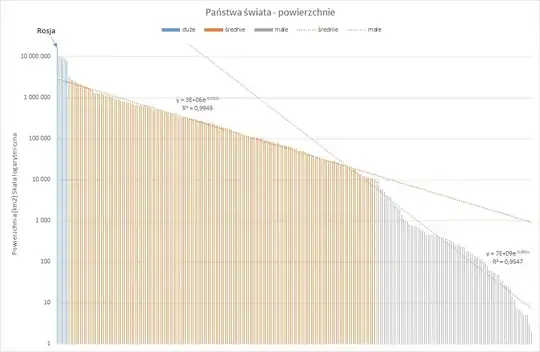I read a blog post that attempts to show that the size of the territory of a country is purely random and therefore bears no major historical significance.
The argumentation (simplified a bit) is as follows:
- If we plot sizes of countries on a logarithmic plot the distribution is linear:
(Each bar is a country, the Y axis is the size of countries in km2; blue bars are "large" countries, orange bars are "medium" countries and grey bars are "small" countries. Countries are labelled "large", "medium" or "small" because, according to the blogger, the exponential distribution has different arguments depending on whether the country is below or above 10000 km2, so in fact there are two distributions, as shown by the straight lines in the plot)
- Therefore, if plot on a linear plot, the distribution will be exponential
- Exponential distribution occurs if the events are purely random
- If it was not random whether a country gained or lost a territory we would expect a Pareto distribution instead
This seems to make sense, but... at the same time it is very counteintuitive. Does it follow that a country competently governed is equally likely to lose a territory than a failed country? The blogger himself says this is not the case, but he claims that a country that is governed competently is likely to be governed far worse after a few generations and will start losing territory. One very profound conclusion after another...
Plus, the blogger himself claims that his findings are contrary to established knowledge.
Is it purely random if a country gains or loses a territory?
